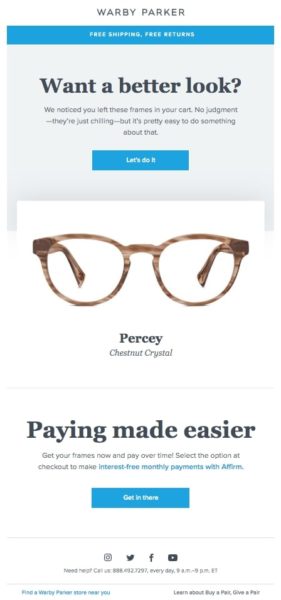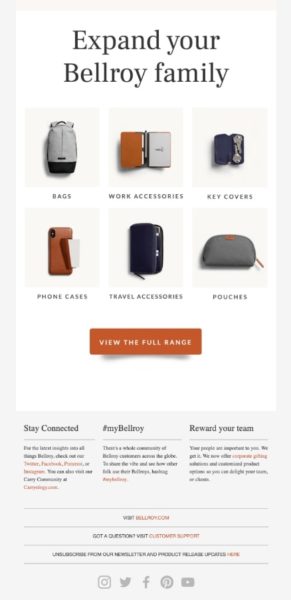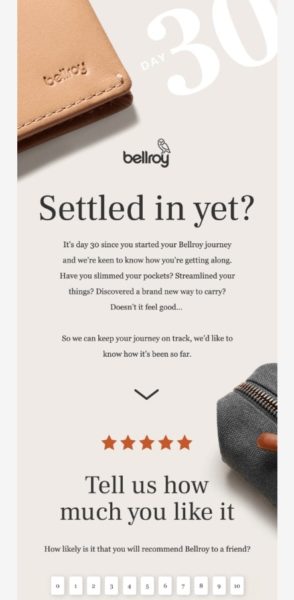Automated email sequences are a crucial component of building a successful ecommerce machine, yet most brands are not using them to their full potential. It’s one of the most commonly overlooked pieces of an email marketing program; and it’s also the piece most likely to make money while you sleep. Now, this is NOT where you beat people over the head with unsophisticated emails constantly. This is where you use smart automations to deliver personalized emails that build relationships and create fans at scale.
In this article we’re going to share our proven framework for creating successful automated email sequences for your ecommerce business.
What are Automated Email Sequences?
We define an automated sequence as a series of emails that are pre-built but typically include dynamic customization. They are sent based on a logic tree where certain emails are triggered when established conditions are met. These triggers can be actions a customer takes, purchasing certain products, spending a certain amount, when a behavior occurs, someone joins a list, etc.
The goal is to create a highly-personalized email experience for your site visitors and customers at scale. One-off email campaigns require you to build and schedule emails one by one. In contrast, your automated system will run all the time and continually nurture relationships with your contacts, educate them on your brand, and sell your products.
What are the Benefits of Having Automated Email Sequences?
Take a look at some of the exciting opportunities that come with using automation:
Build It Once
Automated email sequences are one-time builds. Of course, they will require monitoring and optimizing and should be adjusted as needed. But, generally speaking, they run all the time after you set them live.
Relationships at Scale
A business is not really a business unless it runs on scalable systems. Using pre-written content and dynamic data, these sequences are capable of building relationships, educating customers, and selling product— all at scale.
Easily Optimize
With a platform like Klaviyo, you can A/B test subject lines and creative variations at every step of the automated sequence. This allows you to see the performance of every email in a sequence and optimize it.
How to Build Your Own Automation Strategy
Every ecommerce store is different, but the framework for creating a successful automation strategy is the same. The key is to think about how people behave based on the actions they take in your store. For simplicity’s sake, you can categorize your site visitors’ and customers’ journeys into three categories:
- Pre-Purchase
- Mid-Purchase
- Post-Purchase
When you think about each category, consider what mindset someone is in for each stage. Think about how you’d talk to someone in person in order to build a relationship, and then make that your goal with your emails.
For example, what would you say to someone who has not bought yet but just signed up for your newsletter (pre-purchase stage)? Or, what could you communicate to someone who abandoned checkout yesterday (mid-purchase)?
For each stage of the journey, identify these important messages and then map out the series of emails for each stage. For each of these sequences, the rules of good email marketing still apply. Keep the copy short and simple. Use engaging images. Write engaging subject lines. Deliver value in every email. And always A/B test!
Another way to consider this is to think about customer actions as triggers: “If the customer completes this action, then I will send them this message.”
Examples & Tips
Here are a couple of examples of using customer actions as triggers:
- Trigger: Site visitor signs up to your newsletter
- Automated sequence: A “welcome series” of 3 or more emails that tell more about the brand and offers an incentive for a first purchase.
- Trigger: Customer purchases for the first time.
- Automated sequence: A follow-up series of emails with tips for how to use this product and recommendations of other products they might love too.
Prop Tip #1: Start small and keep it simple! There are a few basic sequences that are important to get in place first. Then, you can monitor, optimize and add to them over time. As these gain momentum, you’ll have more ideas to build automations unique to your customers’ needs.
Pro Tip #2: As you’re mapping out your sequences and writing the content for each email, we recommend using a Google doc. This will keep you from getting caught up in the platform while dialing in your messages.
Automated Sequences You Can Use Right Now
Every company is different, but almost any brand can use the following sequences as a baseline.
1. Pre-Purchase
The goal of the pre-purchase email sequence is to nurture new contacts until they eventually make a purchase. These names are typically gathered from newsletter signups. They could also be acquired from lead magnets or even trade shows. A simple four-email pre-purchase sequence could include:
- Explain the features and benefits of your product and/or brand
- Share your brand story, your “why”
- Identify and disarm potential objections to a purchase
- Provide an irresistible offer (great deal with urgency)
You could also use a pre-purchase email sequence if you use a pre-launch email signup before a new product release. In this case, all the emails in this sequence would be geared toward the specific new product or collection. The goal is to build anticipation and communicate urgency leading up to the launch date. For more on this, read more about How to Create a Marketing Plan for a New Product Launch.
Check out this great welcome email from Wanderer Bracelets. We love the embedded video to learn more about the brand and the recommended products at the bottom.

2. Mid-Purchase
One opportunity for a mid-purchase email sequence is to encourage the visitor to complete their purchase after abandoning checkout. This is typically called an abandon cart sequence. With some store platforms, you will be able to email the user as soon as they add to cart but exit the site. However, it’s more likely that you will do this once they initiate the checkout process (entering their email along the way) but exit before completing the purchase. Emails you can use in this sequence include:
- Get feedback. Did something go wrong at checkout? Were they surprised at the shipping rate?
- Reminder of product left behind. It’s possible that the user simply stepped away and forgot to return.
- Offer your best deal or discount to incentivize a completed purchase
- For more examples, refer to our other posts such as The Best Shopify Abandoned Cart Emails or 8 Automated Email Campaigns Your ECommerce Store Needs.
Another option for a mid-purchase sequence is to keep your customers informed throughout the shipping process. This may not seem necessary, but it’s actually a huge opportunity to create fans of your brand. Opportunities to keep the customer up to date include:
- Celebrate or thank the customer for purchasing
- Notify that you are preparing their order
- Build anticipation with reminders of the features and benefits or with sneak peeks
- Provide education around how to get the most of their product
- Inform with simple shipping notifications and tracking options
- When it arrives, reach out with additional tips for use
Let’s take a look at a creative email we received from Warby Parker when we abandoned our cart:

3. Post-Purchase
Communication should not stop after a purchase has been made! This is when a post-purchase sequence comes into play, with the goal of turning a customer into a raving fan. Encourage them to use the product, evangelize to their sphere of influence, and (of course) buy more.
If you have many different types of products, we recommend creating a different post-purchase sequence for each product type so you can communicate with customers specifically for the products they bought. You might include:
- Tips or education around use; getting the most out of the product
- Remind them to share feedback
- Ask for a product review or a testimonial video
- Offer a discount for their next purchase or to share with a friend or family member
- Recommend complimentary or additional products they’re likely to enjoy
Here’s an example of a great email that could be used to follow-up with a customer after purchasing:


Don’t Forget…
The key to automated email sequences is to build, monitor and then tweak them. Similar to running an ad campaign, it’s not effective to simply build and then forget about it. Optimizing is the name of the game.
We always pay attention to a few key metrics when assessing the health of email flows. These include open rates, click-through rates, number of unsubscribes, and revenue per email. Of course, since each email in a series is a part of a bigger sequence, you shouldn’t just assess each in isolation. If you view them as a funnel instead, you’ll be able to identify specific areas of drop-off or changes in metrics compared to the sequence as a whole. If one step is out of line, that’s an indicator that you need to adjust.
Want to be notified when the next part of our series on ecommerce email drops? Sign up for our Growth Academy Newsletter.
